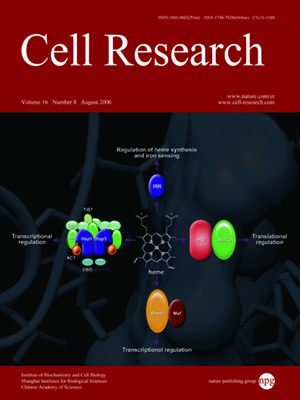
Volume 16, No 8, Aug 2006
ISSN: 1001-0602
EISSN: 1748-7838 2018
impact factor 17.848*
(Clarivate Analytics, 2019)
Volume 16 Issue 8, August 2006: 731-739
ORIGINAL ARTICLES
Tissue differential expression of lycopene β-cyclase gene in papaya
Rachel L Skelton, Qingyi Yu, Rajeswari Srinivasan, Richard Manshardt, Paul H Moore, Ray Ming,
1Hawaii Agriculture Research Center, Aiea, HI 96701, USA; 2Department of Tropical Plant and Soil Sciences, University of Hawaii,
Honolulu, HI 96822, USA; 3USDA-ARS, Pacific Basin Agricultural Research Center, Aiea, HI 96701, USA; 4Department of Plant
Biology, University of Illinois at Urbana-Champaign, Urbana, IL 61801, USA
Correspondence: Ray Ming(rming@life.uiuc.edu)
Carotene pigments in flowers and fruits are distinct features related to fitness advantages such as attracting insects for
pollination and birds for seed dispersal. In papaya, the flesh color of the fruit is considered a quality trait that correlates
with nutritional value and is linked to shelf-life of the fruit. To elucidate the carotenoid biosynthesis pathway in papaya,
we took a candidate gene approach to clone the lycopene β-cyclase gene,
LCY-B. A papaya
LCY-B ortholog, cp
LCY-B,
was successfully identified from both cDNA and bacterial artificial chromosome (BAC) libraries and complete genomic
sequence was obtained from the positive BAC including the promoter region. This cp
LCY-B shared 80% amino acid
identity with citrus
LCY-B. However, full genomic sequences from both yellow- and red-fleshed papaya were identical.
Quantitative real-time PCR (qPCR) revealed similar levels of expression at six different maturing stages of fruits for
both yellow- and red-fleshed genotypes. Further expression analyses of cp
LCY-B showed that its expression levels were
seven- and three-fold higher in leaves and, respectively, flowers than in fruits, suggesting that cp
LCY-B is down-regulated
during the fruit ripening process.
FULL TEXT | PDF
Browse 1921


